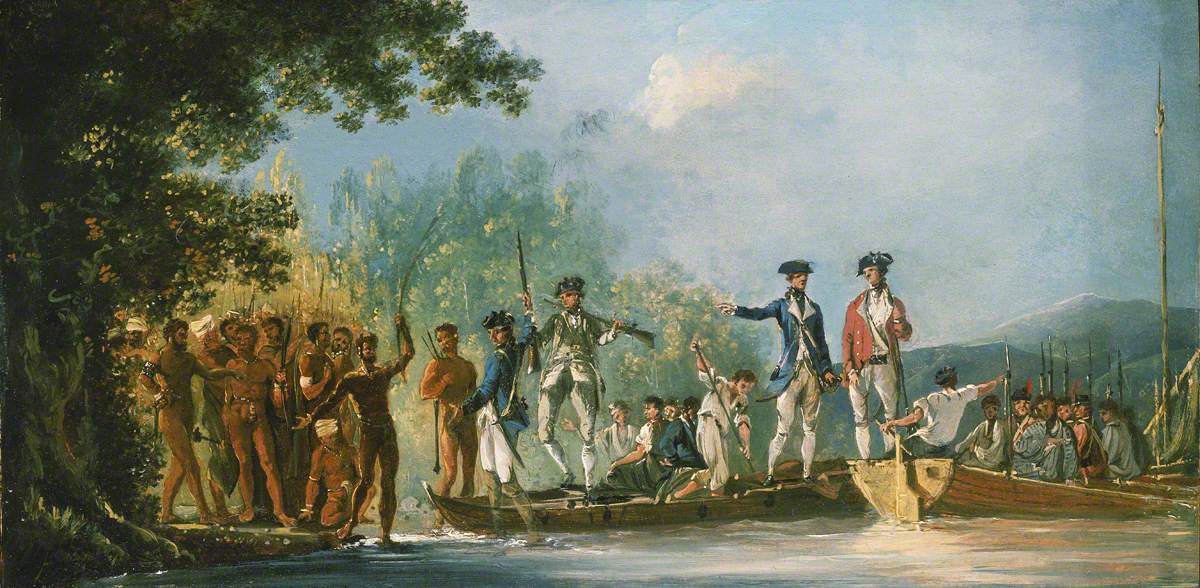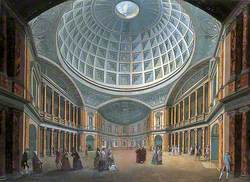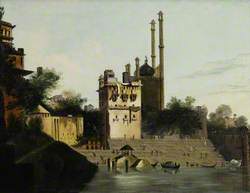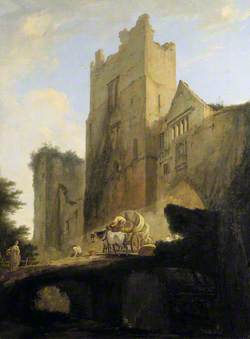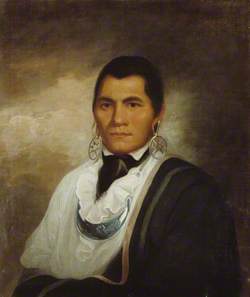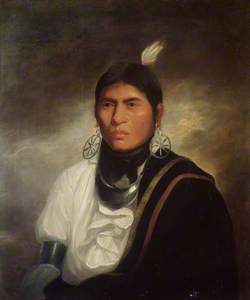How you can use this image
This image can be used for non-commercial research or private study purposes, and other UK exceptions to copyright permitted to users based in the United Kingdom under the Copyright, Designs and Patents Act 1988, as amended and revised. Any other type of use will need to be cleared with the rights holder(s).
Review the copyright credit lines that are located underneath the image, as these indicate who manages the copyright (©) within the artwork, and the photographic rights within the image.
The collection that owns the artwork may have more information on their own website about permitted uses and image licensing options.
Review our guidance pages which explain how you can reuse images, how to credit an image and how to find images in the public domain or with a Creative Commons licence available.
Notes
Add or edit a note on this artwork that only you can see. You can find notes again by going to the ‘Notes’ section of your account.
Hodges was appointed by the Admiralty to record the places discovered on Cook's second voyage, undertaken in the 'Resolution' and 'Adventure', 1772–1775. This was primarily in the form of drawings, many later converted to engravings in the official account of the voyage. He also did some oil paintings but most were painted in London on his return. Cook's main purpose on this expedition was to locate the much talked-of but unknown Southern Continent and expand knowledge of the central Pacific islands, in which Hodges' records of coastal profiles were in part important for navigational reasons. Cook was in the New Hebrides from June to September 1774, during which he spent six weeks making a careful survey of the island group. This painting is an official record of the event, composed in London for engraving in the published account of the voyage, and has adopted the traditional mode of history painting.
The Malekulans are depicted wearing the 'yelau', a form of loincloth, tied up to a belt worn about the waist. Cook wrote that 'their signs of Friendship is a green branch and sprinkling water with the hand over the head'. Cook and his men are shown in contemporary dress and the islanders are painted to accord with the ethnographic reports. The artist continues to use poses and gestures whose ultimate origin lies in classical statuary, particularly in the case of the islanders who have been depicted as tall with a dignified bearing, which is at variance with his journal entry in which Cook described them in derogatory terms.
Title
Landing at Mallicolo (Malakula), One of the New Hebrides
Date
c.1776
Medium
oil on panel
Measurements
H 24.1 x W 47 cm
Accession number
BHC1904
Work type
Painting
